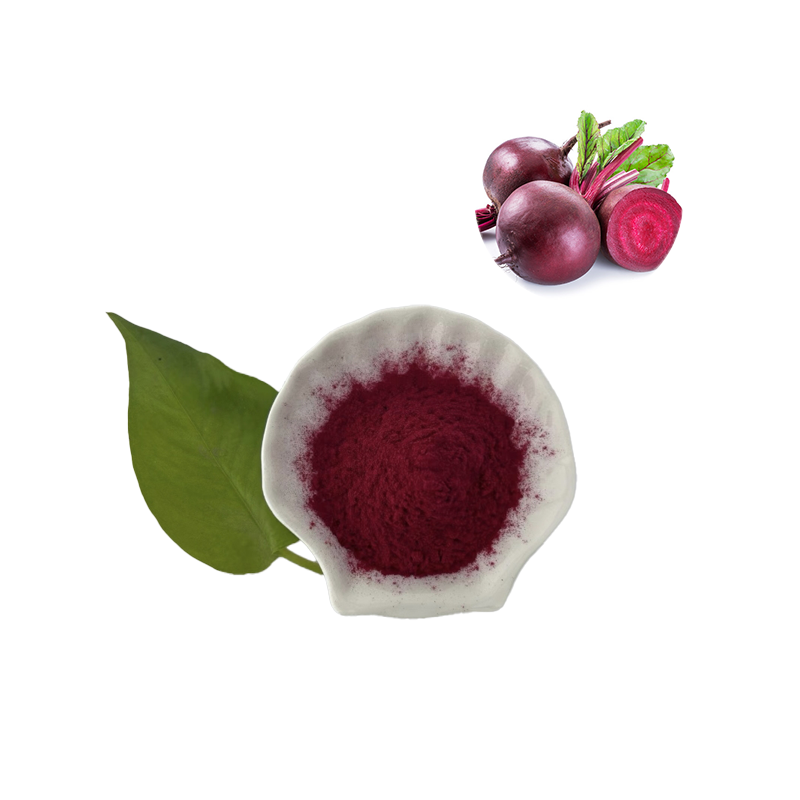Natural Color with a Clean Label Appeal
What Is Beetroot Red Colorant?
Beetroot Red Colorant is a natural food coloring derived from the root of the beet plant (Beta vulgaris). It belongs to a group of pigments called betalains, primarily betanin, which gives it its vivid red to purplish color. Unlike synthetic dyes that are chemically produced, beetroot red is plant-based, water-soluble, and widely recognized for its safety and natural origin. Because of its rich color, clean-label status, and consumer trust, it is now a popular alternative to artificial colorants in food, beverage, and cosmetic formulations.
How Is Beetroot Red Colorant Produced?
The process of making beetroot red colorant typically starts with fresh beetroot, which is washed, crushed, and juiced. The juice is then filtered and concentrated, and depending on the application, it may be dried into powder form or kept as a liquid extract. The goal is to retain the betanin compound, which is responsible for the deep color. Manufacturers may further standardize the extract to ensure consistent color strength, making it suitable for large-scale use in processed foods and drinks.
Why Is Beetroot Red Used in Food Products?
Beetroot red is widely used in food products because it adds vibrant, appealing colors without the risks associated with artificial dyes. Consumers naturally associate red and pink hues with ripeness, sweetness, and freshness—characteristics that help improve product appeal. Manufacturers use beetroot red to color yogurts, fruit juices, candies, gummies, plant-based meats, and baked goods. The ability to create visually attractive foods using a natural, plant-derived ingredient aligns with both consumer expectations and industry trends toward transparency and clean labeling.
In What Types of Products Is Beetroot Red Commonly Found?
You can find beetroot red colorant in a wide variety of food and beverage products. It is commonly used in fruit-flavored dairy products like yogurt and ice cream, as well as in confections such as jellies, marshmallows, and fruit snacks. It’s also used in beverages like smoothies, sports drinks, and juices to give a natural red or pink tone. Beyond food, beetroot red appears in personal care items such as lip balms and bath products. In the plant-based food industry, it’s frequently used to give meat alternatives a more authentic red or raw meat-like appearance.
Why Is Beetroot Red Colorant Growing in Popularity?
Beetroot red is becoming more popular due to the global shift toward natural ingredients and clean-label products. Consumers are increasingly concerned about what goes into their food, and many are actively avoiding synthetic additives. The use of plant-derived colorants like beetroot red allows food manufacturers to meet this demand while also marketing their products as safe, healthy, and environmentally friendly. Additionally, regulatory agencies in Europe, the U.S., and Asia are tightening rules around synthetic dyes, further encouraging the use of natural alternatives.
Final Thoughts

Beetroot Red Colorant offers an ideal solution for food and beverage manufacturers looking to create naturally colored, clean-label products that align with modern consumer expectations. Its vivid appearance, safe profile, and plant-based origin make it a compelling choice in a wide range of industries. Although it does have some technical limitations, ongoing innovations in formulation technology continue to expand its potential applications. As the market for natural food additives continues to grow, beetroot red is well-positioned to remain a key player in the future of food coloration.
About Ruiwo:


contact us:
Address:Room 703, Ketai Building, No. 808, Cuihua South Road, Xi’an, Shaanxi, China
E-mail: info@ruiwophytochem.com
Phone: 008613484919413 0086-29-89860070
Hours: Monday-Friday: 9am to 6pm
Post time: Jul-11-2025






